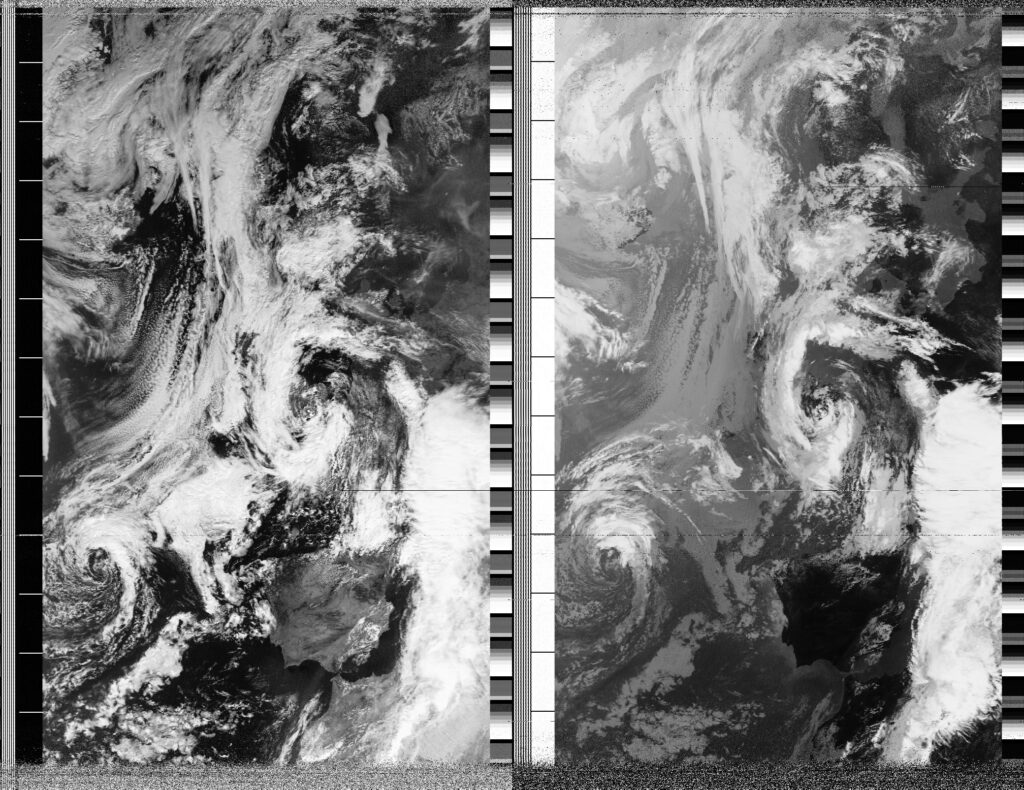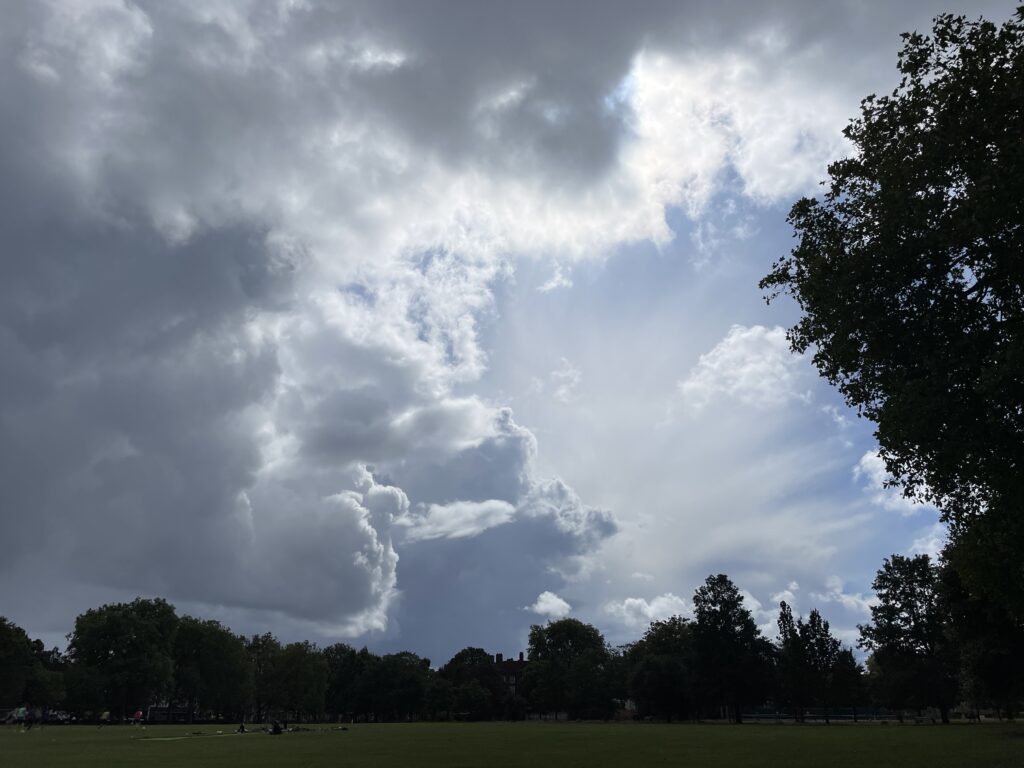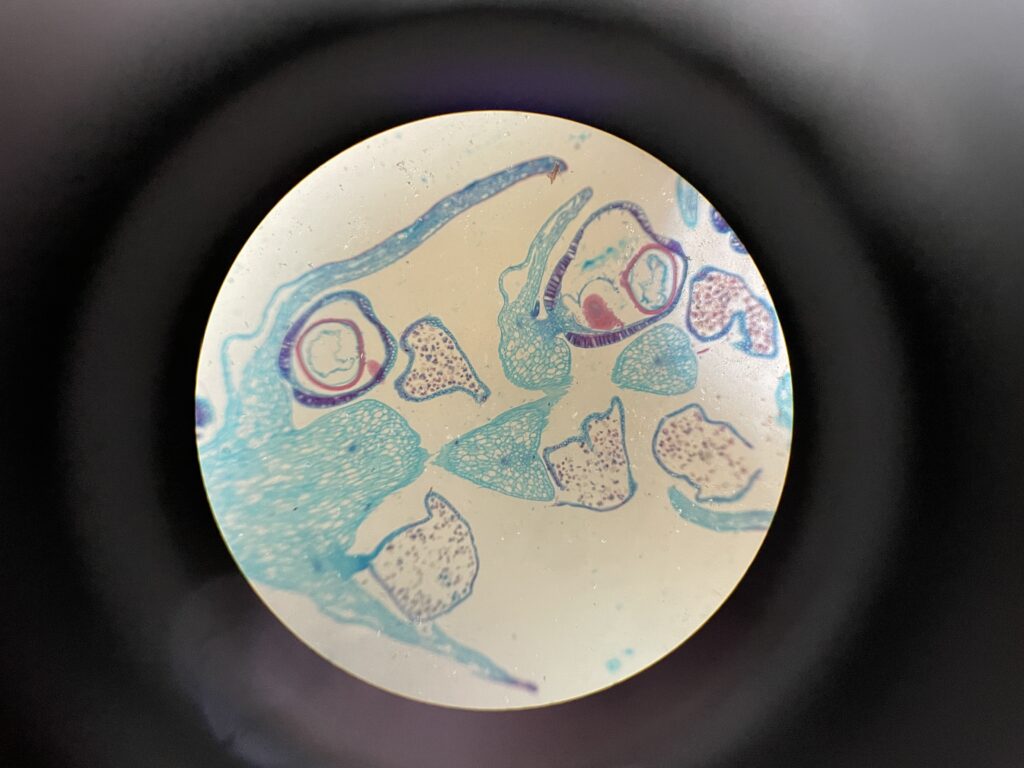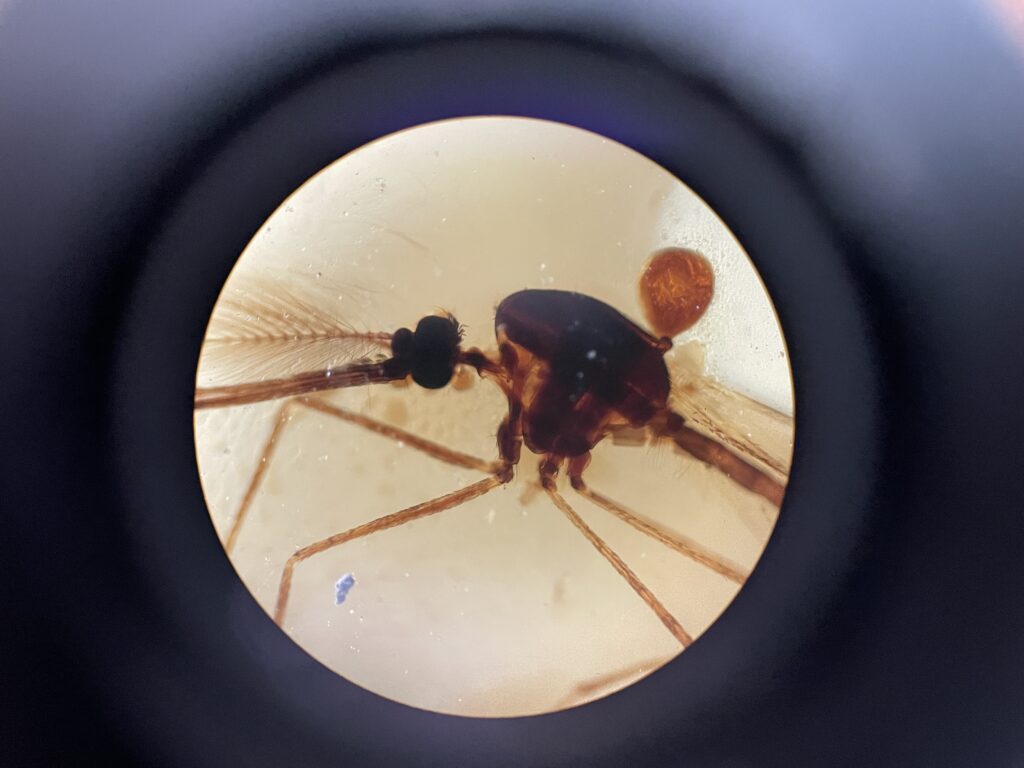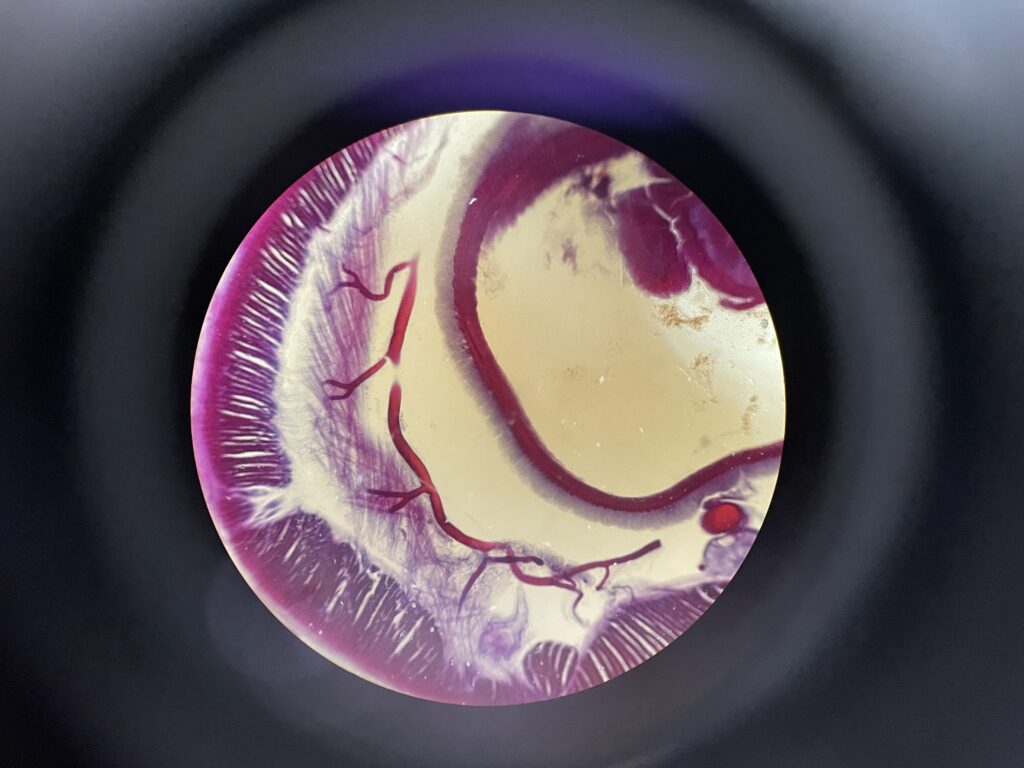Local Date
8 September 2024Local Time
12:39Location
Hackney Downs, LondonCountry or Territory
Contributor
Sasha EngelmannSatellite
NOAA-18Radio Callsign
Archive ID
Coordinates
To the southeast, a gap in a towering panorama of clouds looks like a giant lens or a portal, magnifying rays of light. Two men walk by my ground station asking 'is there signal??' and then exclaiming 'you see the storm is picking up!'. Yet the wind does not rise further than a few sharp gusts and the clouds dance past. In my daily micro-weather observations, I look at 'Lumbricus' (an earthworm with its movement muscles), 'Anopheles male E' (a male mosquito) and a fragment of Selaginella sporophylls (also known as the spikemosses or clubmosses). I read that Selaginella are known as the 'fern allies' - I thought this was a nice phrase, if read non-scientifically. Some species of Selaginella are known as the 'resurrection plant' because they can survive complete dehydration, much like the lichens I wrote about yesterday. These moss-like plants roll up into brown balls, but rehydrate and expand when moistened. On this theme of 'resurrection' or 'time-traveling' or bending of temporal/ spatial ideas of life, I am reminded of a passage in the book Ceremony (1977) by Leslie Marmon Silko. It is a scene from the perspective of Tayo, a man of Laguna Indian and Mexican heritage who returns from the war in Vietnam. At dawn, Tayo is watching the life emerging around a small pool filled by a spring in the otherwise bone-dry mountains on the reservation. He observes: "When the shadows were gone, and the cliff rock began to get warm, the frogs came out from their sleeping places in small cracks and niches in the cliff above the pool. They were the colour of the moss near the spring, and their backs were spotted the colour of wet sand. They moved slowly into the sun, blinking their big eyes. He watched them dive into the pool, one by one, with a graceful quiet sound. They swam across the pool to the sunny edge and sat there looking at him, snapping at the tiny insects that swarmed in the shade and grass around the pool. He smiled. They were the rain's children. He had seen it happen many times after a rainstorm. In dried up ponds and in the dry arroyo sands, even as the rain was still falling, they came popping up through the ground, with wet sand still on their backs. Josiah said they could stay buried in the dry sand for many years, waiting for the rain to come again" (Silko, 1977: 87-88).
